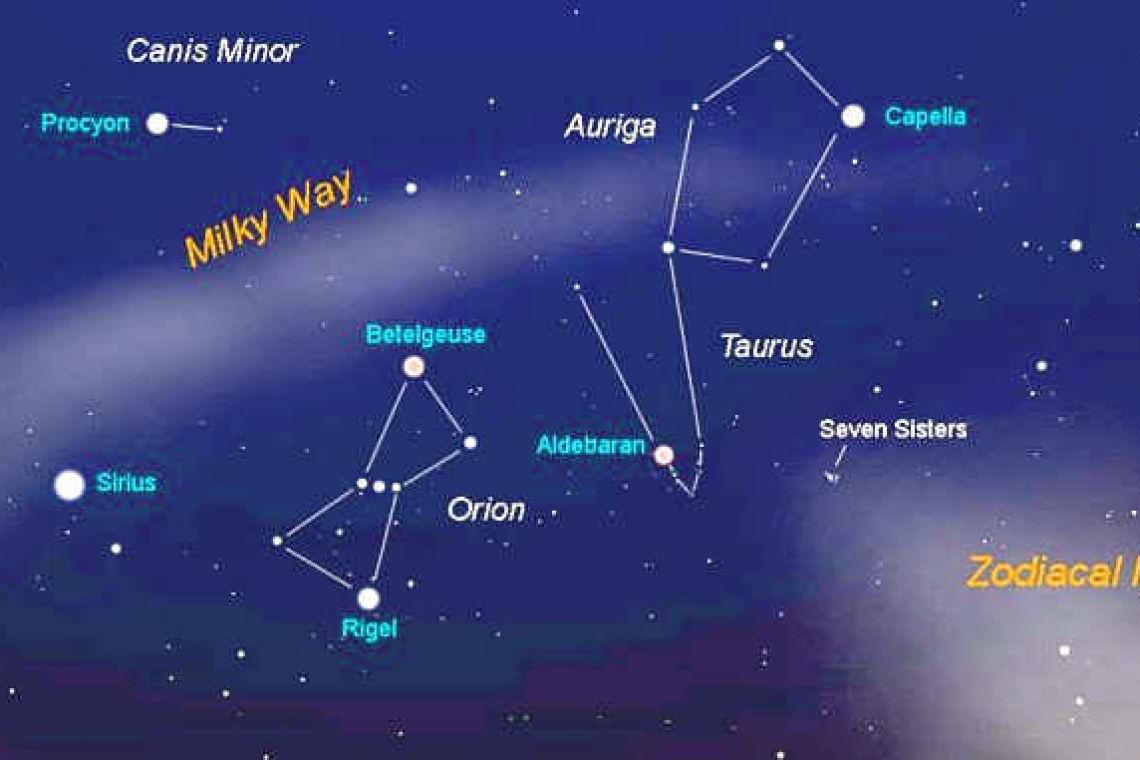Sun rises at 6:04am
Sun sets at 5:54pm
Lunar phase: waning crescent moon, third quarter
Moon rises at 1:31am, Sunday
Moon sets at 1:20pm, Saturday
This weekend, the night sky will offer lots of beauty. Between the crescent moon in the pre-dawn sky and the brilliant stars shining all night long, there is something for everyone, especially anyone with clear vision and curiosity. For instance, if you take the time to find three bright stars, you will behold something quite cool: Stars that flash different colours!
The first is the bright star Arcturus in the constellation Boötes the Herdsman. Look for Arcturus in the west at dusk or nightfall. You can use the Big Dipper to point the way (see the image). Note that the arc of the Big Dipper handle extended outward always points to Arcturus. That’s one handy handle!
Another is Capella in the constellation Auriga the Charioteer. Look for Capella in the northeast in mid-evening. Capella is sometimes called the Goat Star – supposedly the herdsmen used the star for guiding them home. Others say that Auriga represents not a charioteer but indeed a goat herder. So there is a bit of sweet confusion in this legend.
And the third bright star that shifts its colour on occasion is Sirius, which is in the constellation Canis Major, or the Big Dog. Sirius is the brightest true star in all of our skies and as such, it is fairly easy to recognize – just look in the southern part of the sky before dawn.
All three of these stars are very bright. However, at this time of year, you’re seeing their light through a greater thickness of atmosphere than other times of the year. The thicker atmosphere refracts the stars’ light which can cause these stars to flash in the various colours of the rainbow. It’s a subtle colour range, so don’t expect Las Vegas style neon beacons beaming down on you.
Those of you who are early risers may find joy in observing the waning crescent moon accompanied by the dazzling planet Venus. Best viewing is about an hour before sunrise.
About that same time, look for the constellation Leo the Lion, as he is also up before the sun. The brightest star in Leo is Regulus, but Venus outshines Regulus by well over 100 times. Watch these three objects: the moon, dazzling Venus and bright Regulus adoring the morning dawn on October 12, 13, 14 and 15. Simply get up before daybreak, and look eastward.
Thank you for keeping up with the Night Sky articles designed for St. Maarten viewing. If you are out later on in the week, each star rises about four minutes earlier each day than written here, and the moon rises 50 minutes later. Night Sky is researched and compiled by Lisa Davis-Burnett. Earthsky.org is a key resource for information and images. Questions or comments? Email This email address is being protected from spambots. You need JavaScript enabled to view it..







